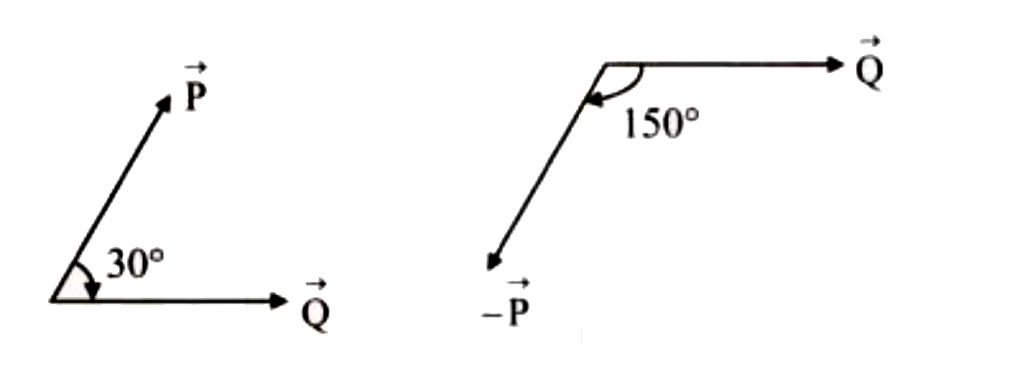If →P and →Q are the non zero positive vectors making angle of 30∘ with each other, then the angle (in degrees) made by additive inverse of →P with →Q is 10x then x is
Text Solution
The correct Answer is:15.00
If →P is multiplied by negative real number then we get a vector acting in the opposite direction of →P i.e. −→P

|
Topper's Solved these Questions
Similar Questions
Knowledge Check
If →P and →Q denote the sides of parallelogram and its area is 12PQ, then the angle between →P and →Qis
A0∘B30∘C45∘D60∘If →P.→Q=PQ then angle between →P and →Q is
A0∘B30∘C45∘D60∘What is the angle between →P and the resultant of (→P+→Q) and (→P−→Q)
AZeroBtan−1(P/Q)Ctan−1(Q/P)Dtan−1(P−Q)/(P+Q)
The sum of two forces →P and →Q is →R such that ∣∣→R∣∣=∣∣→P∣∣. The angle θ (in degrees) that the resultant of 2→P and →Q will make with →Q is , _____________.
View SolutionTwo vectors →Pand→Q are inclined to each other at angle θ. Which of the following is the unit vector perpendicular to →Pand→Q ?
View SolutionThe sum of two forces →P and →Q is →R such that ∣∣→R∣∣=∣∣→P∣∣. The angle θ (in degrees) that the resultant of 2→P and →Q will make with →Q is , _____________.
View SolutionIf ∣∣→P+→Q∣∣=∣∣→P∣∣−∣∣→Q∣∣ , the angle between the vectors →Pand→Q is
View SolutionTwo vectors →Pand→Q are inclined to each other at angle θ. Which of the following is the unit vector perpendicular to →Pand→Q ?
View Solution
